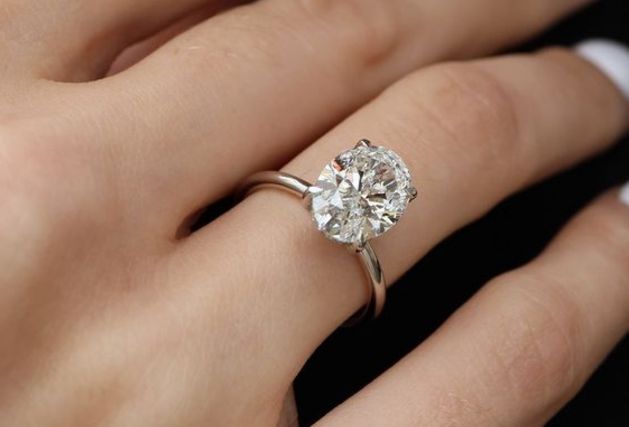Choosing the right metal for your lab diamond ring is a big decision. After all, this ring symbolizes love and commitment, so you want to make sure it reflects your style and stands the test of time. In this article, we’ll dive into the differences between platinum and gold, exploring their pros, cons, and how they measure up for lab diamond rings platinum vs gold. Let’s get started!
Introduction: Choosing the Right Metal
Why Lab Diamonds?
Lab diamonds have become the go-to choice for many couples. They’re ethically sourced, often more affordable than mined diamonds, and just as stunning. But once you’ve decided on a lab diamond, the next question is: what metal should you choose for the setting?
Importance of Metal Choice
The metal you choose not only affects the look of the ring but also its durability, weight, and maintenance needs. Platinum and gold are two of the most popular options, each offering unique benefits and challenges.
Understanding Platinum
What is Platinum?
Platinum is a naturally occurring, dense metal that’s highly prized for its rarity and durability. It has a beautiful, shiny finish that complements the brilliance of lab diamonds perfectly.
Pros and Cons of Platinum
Benefits of Platinum
Durability: Platinum is incredibly strong and resistant to wear and tear. It’s less likely to scratch or tarnish over time, making it a long-lasting choice.
Hypoallergenic: If you have sensitive skin, platinum is a great option as it’s hypoallergenic and won’t cause skin reactions.
Natural Color: The naturally white hue of platinum enhances the sparkle of lab made diamonds, making them appear even more brilliant.
Drawbacks of Platinum
Weight: Platinum is heavier than gold, which some people may find uncomfortable.
Cost: Typically, platinum is more expensive than gold, which might be a consideration for budget-conscious shoppers.
Patina Formation: While many appreciate the unique patina that develops over time, others may prefer a consistently shiny look.
Understanding Gold
What is Gold?
Gold is a classic choice for jewelry, valued for its beauty and versatility. It comes in various colors and karats, allowing you to choose a look that suits your personal style.
Types of Gold
Yellow Gold
This is the traditional gold color that many people associate with fine jewelry. It’s often made by mixing pure gold with other metals like copper and silver.
White Gold
White gold has become increasingly popular, especially for engagement rings. It’s made by alloying gold with metals like palladium or nickel and often coated with rhodium for added shine.
Rose Gold
Rose gold has a lovely pink hue, thanks to the addition of copper. It’s a romantic choice that has gained significant popularity in recent years.
Pros and Cons of Gold
Benefits of Gold
Variety: With different colors and karats, gold offers more options for personalization.
Affordability: Generally, gold is more affordable than platinum, allowing for a more budget-friendly purchase.
Lightweight: Gold is lighter than platinum, which some people prefer for comfort.
Drawbacks of Gold
Durability: While gold is strong, it can scratch more easily than platinum, especially softer alloys like 14k gold.
Maintenance: Gold rings often require more upkeep to maintain their shine, especially if they’re plated.
Hypoallergenic Concerns: Some alloys, particularly nickel, can cause allergic reactions in sensitive individuals.
Comparing Platinum and Gold for Lab Diamond Rings
Now that we understand both metals, let’s compare them across various aspects to help you make your decision.
Aesthetic Differences
Platinum offers a sleek, modern look with its bright white finish, while gold provides warmth and richness. Your choice might depend on your personal aesthetic and what you envision for your ring.
Durability and Longevity
If you’re looking for a ring that can withstand everyday wear, platinum may be the better option. Its durability means it won’t need to be replaced as frequently as gold, making it a long-term investment.
Cost Comparison
Gold typically wins in the cost category, being more affordable than platinum. If you’re on a tight budget but still want a stunning ring, gold might be the way to go. However, keep in mind that investing in platinum can pay off in the long run due to its longevity.
Maintenance and Care
Both metals require care, but platinum may need less maintenance overall. Gold, especially white gold, can require periodic re-plating to maintain its shine. Platinum will develop a unique patina over time, which some people love, but others might prefer to keep it polished.
Choosing the Right Metal for Your Ring
Ultimately, the choice between platinum and gold comes down to your personal preferences and lifestyle. Here are a few considerations to help guide your decision.
Personal Style and Preference
Think about your style and what metal resonates with you. Do you prefer the classic warmth of gold or the modern sleekness of platinum? Trust your instincts!
Lifestyle Considerations
If you lead an active lifestyle or work with your hands, platinum might be a better fit due to its durability. On the other hand, if you prefer a lighter ring, gold could be more comfortable.
Budget Factors
Consider your budget and how much you’re willing to invest in the ring. While platinum may be pricier, gold offers a range of options at different price points.
Conclusion: Finding Your Perfect Lab Diamond Ring
Choosing between platinum and gold for your lab diamond ring doesn’t have to be daunting. Both metals offer unique benefits and styles that can beautifully complement your diamond. Ultimately, it’s about what feels right for you. Whether you lean toward the durability of platinum or the warmth of gold, the most important thing is that your ring reflects your personal style and love story. Happy ring shopping!

